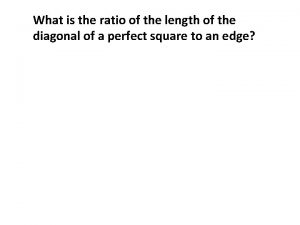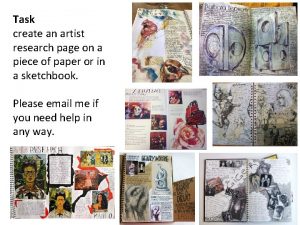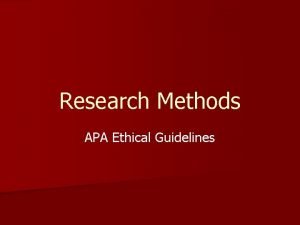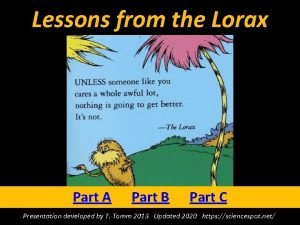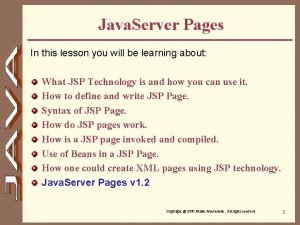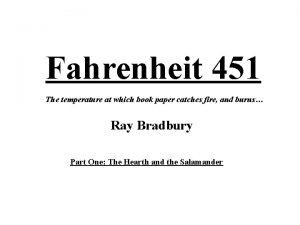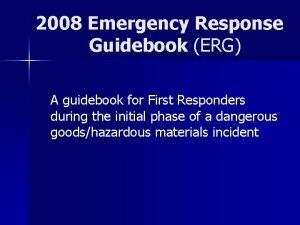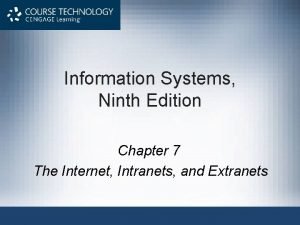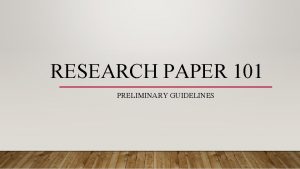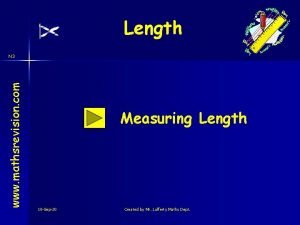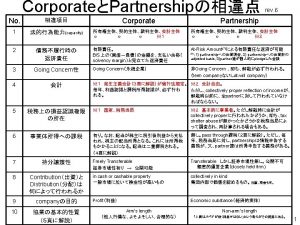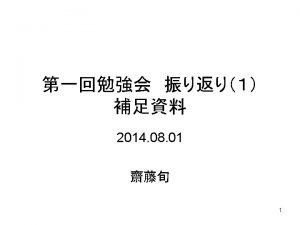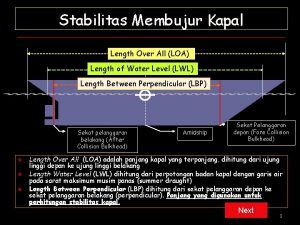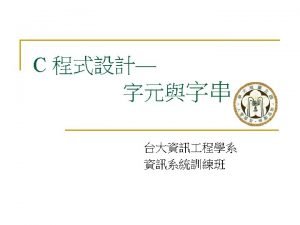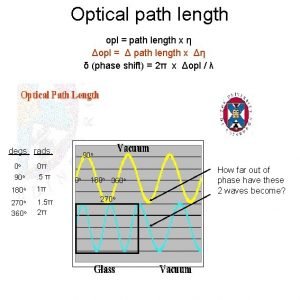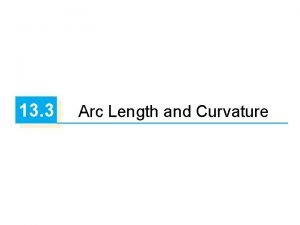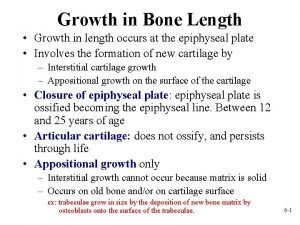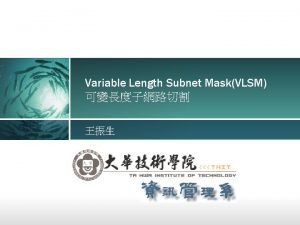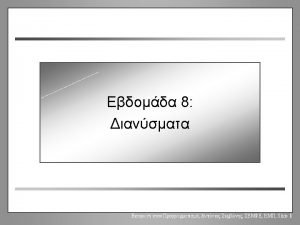Research Paper Guidelines Length 3 5 pages Research























- Slides: 23

Research Paper Guidelines Length: 3 -5 pages Research: Minimum of 5 sources: 1 - Anchor Text 4 - SCHOLARLY novel, magazine, journal, or newspaper source that you find in the MHS media Center’s Dat a base. THESE SOURCES MUST BE CREDIBLE. YOU MUST CITE THE ORIGINAL SOURCE

Developing Your Thesis Once you have decided on your topic and thesis, focus on finding strong evidence to support your paper.

Research Paper Avoiding Plagiarism Parenthetical Documentation Summarizing, Paraphrasing & Direct Quotations

Research Paper: Avoiding Plagiarism When you make research your own, your writing will sound like you. That is exactly what you want. But what you don’t want is to mislead people into thinking that all these ideas are your own. If you do, you may be guilty of plagiarism--- the act of presenting someone else’s ideas as your own. Plagiarism is theft, even when it is unintentional. Professional journalists and writers have lost their jobs, and certainly their credibility, because they plagiarized.

In word-for-word plagiarism, a researcher repeats the exact words of a source without giving the necessary credit. Paraphrase plagiarism occurs when a researcher says basically the same thing as an original source with just a few words changed. In spot plagiarism, a researcher uses only a source’s key words or phrases as his or her own without giving credit.

You OWE it to your sources, your readers, and yourself to give credit for the ideas you use. To avoid plagiarism when you paraphrase, look away from the source as you take notes on it. After you have written your paraphrase, reread the source to make sure that you have used your own words.

Documenting Your Sources: Parenthetical Documentation is the information in the paper that tells what sources you used. The method of documentation most widely used today is called parenthetical documentation.

To acknowledge a source with parenthetical documentation, enclose a brief reference in parentheses. The reference, which is called a parenthetical citation, usually consists of an author’s last name and a page number. The end punctuation mark should be placed outside the parentheses. Example: The Titanic was four city blocks long and eleven stories high (Baldwin 28).

The process of placing the citation in your paper is called citing a source. A parenthetical citation contains just enough information to help the reader locate the source in the Works Cited list at the end of your paper. A Works Cited list is a complete record of the sources referred to in the paper in other words a Works Cited list consists of the parenthetical citations used in the text of your paper. Easy. Bib will help you construct your Works Cited list.

When? ? ? When do you use parenthetical documentation? Use the parenthetical documentation every time you use information from a source. Every time you summarize, paraphrase, or quote a source.

A. Summary: used to record the general idea of large amounts of information 1. It is used to record only the general idea of long passages (up to two pages) in your own words. 2. The summary must be cited.

B. Paraphrase: used to transfer the exact idea of the original passage to a note card, using your own words 1. You are paraphrasing improperly if you: a. Retain the sentence pattern of the original and simply change the word order. b. Use more than three words in succession from the original source.

Continued: c. Distort the meaning of the original passage. 2. Do not restate word for word: rather restate idea by idea 3. Your paraphrase must be cited.

Direct Quotation: According to the MLA Handbook for Writers of Research Papers 2 nd Ed. , “Quote only words, phrases, lines, and passages that are particularly interesting, vivid, unusual, or apt, and keep all quotations as brief as possible” (56). All direct quotations must be cited.

1. Enclose all quotations in quotation marks 2. Always copy the quotation exactly as it appears in the original source. Copy spelling, internal punctuation, and capitalization, even if the original contains errors.

3. All quotations must be integrated. Never drop a quotation into a sentence or paragraph without a proper lead-in. a. For example, do not write the following: There has been a de-emphasis in the importance of grammar instruction in the modern classroom. “Many teachers seem to believe rules stifle spontaneity” (D’Angelo 54).

b. Do the following instead: Because “many teachers seem to believe rules stifle spontaneity, ” there has been a de-emphasis in the importance of grammar instruction in the modern classroom (D’Angelo 54). c. How to integrate quotations: i. The “somebody said” lead-in is very common. For example: Jane M. Agee comments, “Many students who would not have attempted college seven years ago are now coming into state university through junior colleges…” (10).

ii. The “blended” lead-in provides more flexibility. In this kind of lead-in, some of the quoted material is left out and what is retained blends right in with the sentence. For example: Because “Many teachers seem to believe rules stifle spontaneity, ” there has been a de-emphasis in the importance of grammar instruction in the modern classroom (D’Angelo 54).

iii. The “sentence followed by a colon” lead-in is another effective technique. For example: Agee insists that English instruction on the college level will not be improved until educators examine realistically the situation: “Public school teachers, professors of English and English Education, students, and state leaders need to sit down together and evaluate the current realities before any real progress can be made” (10).

Here’s How: Guidelines for Parenthetical Documentation 1. Work with an Author and Page Number: Give the author’s last name and the page number in parentheses. The Titanic was four city blocks long and eleven stories high (Baldwin 28). 2. Work with Only a Title and a page number: Give the title (or a shortened version of it) and the page number. (Chicago Manual 126) 3. Work with an Author and No Page Number: Give the author’s last name(s) in parentheses. (Smith). Or (Brown and Little). 4. Work with a Title and No Page Number: Give the title (or a shortened version of it). (Post Traumatic Stress Syndrome).

5. Work with no page numbers, but with numbered paragraphs: Give author’s name or title and use “par. ” (Smith, par. 4)

SAMPLE: Source Card (for a book) Author or Editor of book Roman numeral to number all source cards – Alphabetically by author. Smith, Joe. How to Write a Research Paper. New York: Holt Publishing, 2000. Date of publication Title of book IV Place of publication Publisher

SAMPLE: Note Card (for a any source) Source info & page # Title Heading Writing a research paper Smith, 27 Quotation, paraphrase, or summary of information found from source. IV - 3 Actual information. Source #, Card #
 Printed pages vs web pages
Printed pages vs web pages What is the ratio of the length of to the length of ?
What is the ratio of the length of to the length of ? Artist research pages
Artist research pages Research gap
Research gap Paper 2 aice general paper
Paper 2 aice general paper Aice general paper 1
Aice general paper 1 Early childhood research quarterly impact factor
Early childhood research quarterly impact factor Apa ethical guidelines for research
Apa ethical guidelines for research Apa ethical guidelines
Apa ethical guidelines Two facing pages in a yearbook
Two facing pages in a yearbook A website is a collection of web pages.
A website is a collection of web pages. What did the onceler make
What did the onceler make Jose pages rebollar
Jose pages rebollar Java server pages tutorial
Java server pages tutorial Fahrenheit 451 first page
Fahrenheit 451 first page Fahrenheit 451 pages 67-76 summary
Fahrenheit 451 pages 67-76 summary What happened when montag crossed the ten-lane highway?
What happened when montag crossed the ten-lane highway? 3 pages double spaced
3 pages double spaced House of leaves page 633 decoded
House of leaves page 633 decoded Fahrenheit 451 pages 93-110 summary
Fahrenheit 451 pages 93-110 summary Green section erg
Green section erg Pages 294 and 295
Pages 294 and 295 Is the standard page description language for web pages
Is the standard page description language for web pages Fahrenheit 451 pages
Fahrenheit 451 pages

